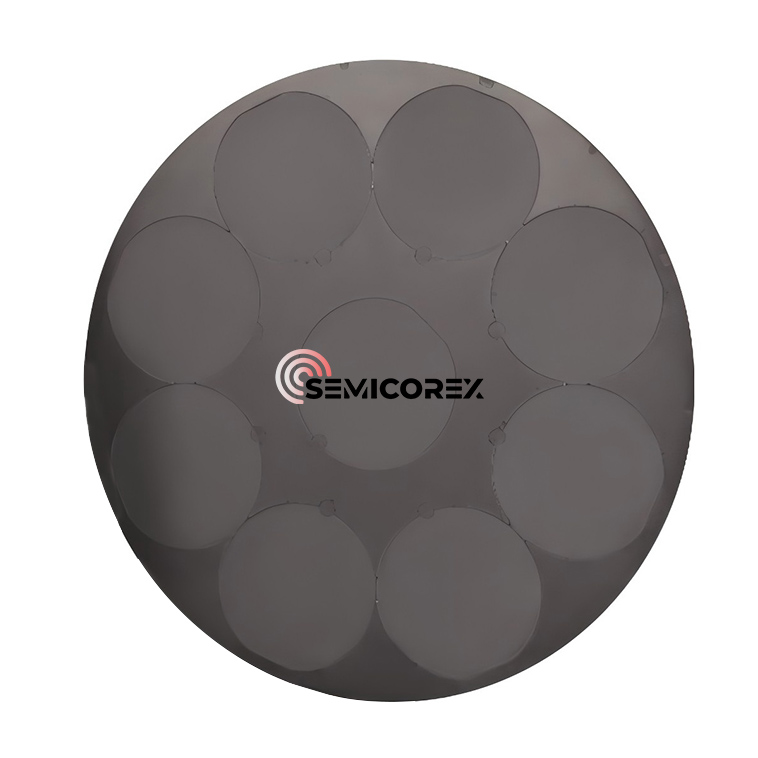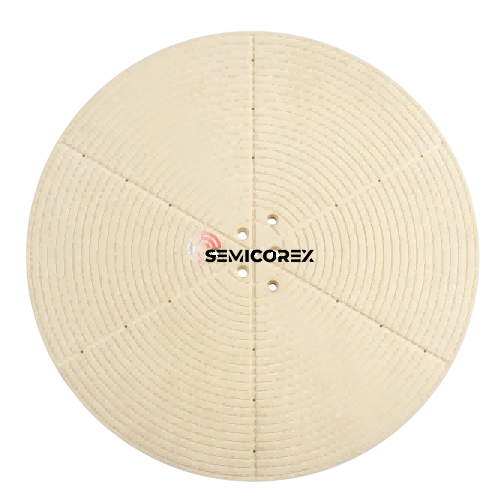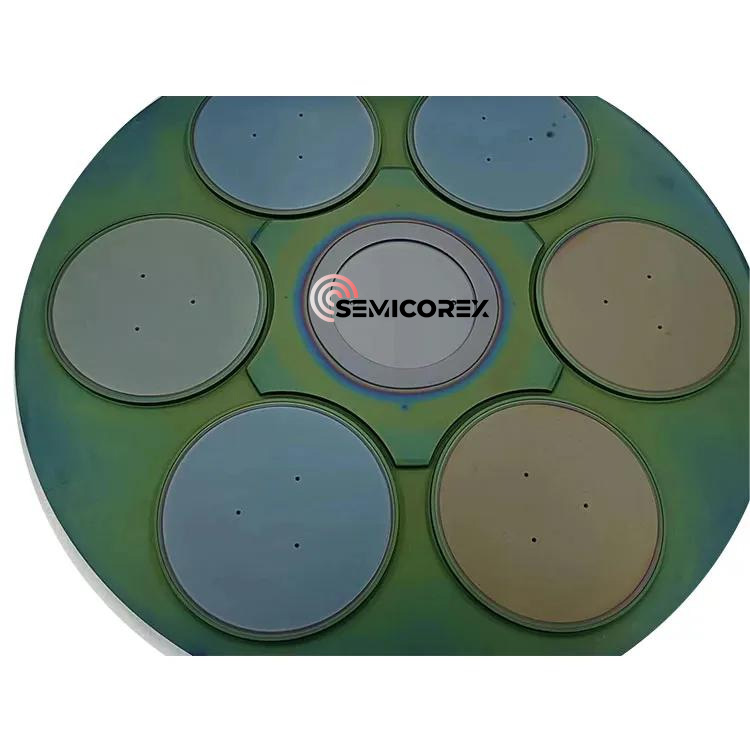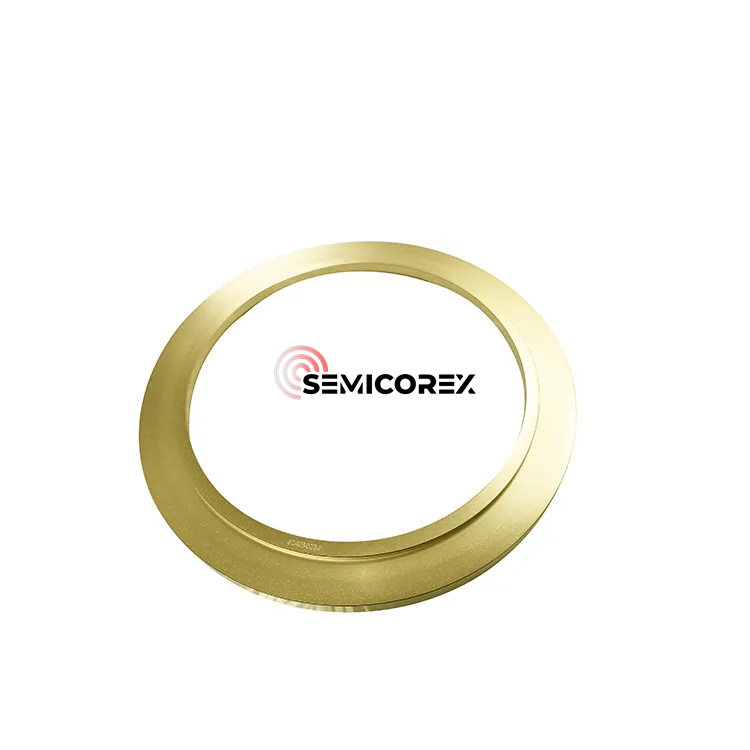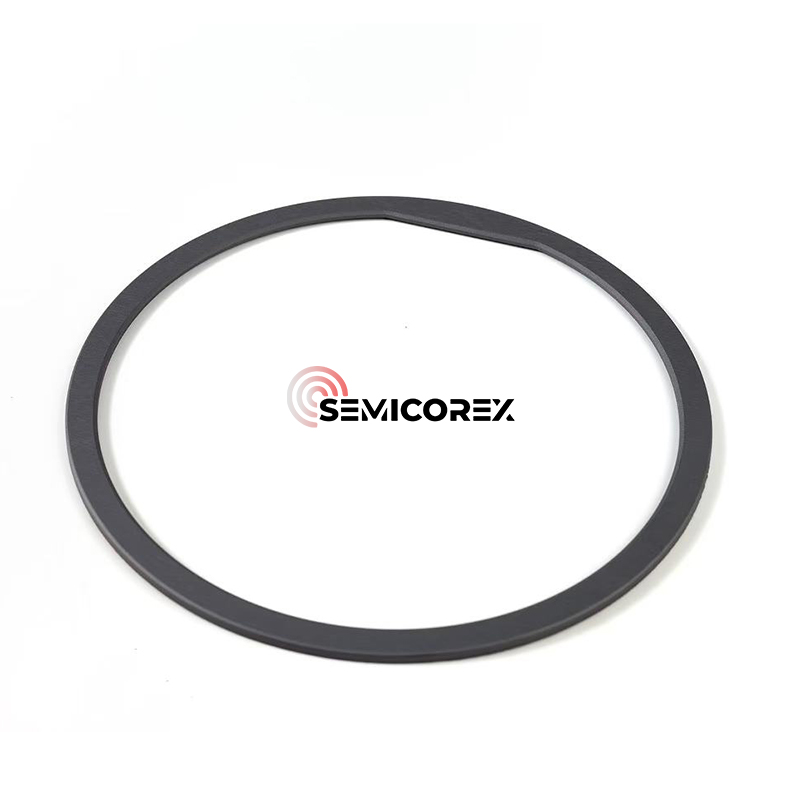
- English
- Español
- Português
- русский
- Français
- 日本語
- Deutsch
- tiếng Việt
- Italiano
- Nederlands
- ภาษาไทย
- Polski
- 한국어
- Svenska
- magyar
- Malay
- বাংলা ভাষার
- Dansk
- Suomi
- हिन्दी
- Pilipino
- Türkçe
- Gaeilge
- العربية
- Indonesia
- Norsk
- تمل
- český
- ελληνικά
- український
- Javanese
- فارسی
- தமிழ்
- తెలుగు
- नेपाली
- Burmese
- български
- ລາວ
- Latine
- Қазақша
- Euskal
- Azərbaycan
- Slovenský jazyk
- Македонски
- Lietuvos
- Eesti Keel
- Română
- Slovenski
- मराठी
- Srpski језик
Etching Ring
The Etching Ring made of CVD SiC is an essential component in the semiconductor manufacturing process, offering exceptional performance in plasma etching environments. With its superior hardness, chemical resistance, thermal stability, and high purity, CVD SiC ensures that the etching process is precise, efficient, and reliable. By choosing Semicorex CVD SiC Etching Rings, semiconductor manufacturers can enhance the longevity of their equipment, reduce downtime, and improve the overall quality of their products.*
Send Inquiry
Semicorex Etching Ring is a critical component in semiconductor manufacturing equipment, specifically in plasma etching systems. Made from Chemical Vapor Deposition Silicon Carbide (CVD SiC), this component offers superior performance in highly demanding plasma environments, making it an indispensable choice for precision etching processes in the semiconductor industry.
The etching process, a fundamental step in creating semiconductor devices, requires equipment that can withstand harsh plasma environments without degrading. The etching ring, positioned as part of the chamber where plasma is used to etch patterns onto silicon wafers, plays a crucial role in this process.
The etching ring functions as a structural and protective barrier, ensuring that plasma is contained and directed precisely where needed during the etching process. Given the extreme conditions within plasma chambers—such as high temperatures, corrosive gases, and abrasive plasma—it is essential that the etching ring is constructed from materials that offer exceptional resistance to wear and corrosion. This is where CVD SiC (Chemical Vapor Deposition Silicon Carbide) proves its worth as a top choice for etching ring manufacturing.
CVD SiC is an advanced ceramic material known for its outstanding mechanical, chemical, and thermal properties. These characteristics make it an ideal material for use in semiconductor manufacturing equipment, particularly in the etching process, where performance demands are high.
High Hardness and Wear Resistance:
CVD SiC is one of the hardest materials available, second only to diamond. This extreme hardness provides excellent wear resistance, making it capable of withstanding the harsh, abrasive environment of plasma etching. The etching ring, exposed to continuous bombardment by ions during the process, can maintain its structural integrity for longer periods compared to other materials, reducing the frequency of replacements.
Chemical Inertness:
One of the primary concerns in the etching process is the corrosive nature of plasma gases, such as fluorine and chlorine. These gases can cause significant degradation in materials that are not chemically resistant. CVD SiC, however, exhibits exceptional chemical inertness, particularly in plasma environments containing corrosive gases, thereby preventing contamination of the semiconductor wafers and ensuring the purity of the etching process.
Thermal Stability:
Semiconductor etching processes often occur at elevated temperatures, which can cause thermal stress on materials. CVD SiC has excellent thermal stability and a low thermal expansion coefficient, which allows it to maintain its shape and structural integrity even at high temperatures. This minimizes the risk of thermal deformation, ensuring consistent etching precision throughout the manufacturing cycle.
High Purity:
The purity of materials used in semiconductor manufacturing is of utmost importance, as any contamination can negatively affect the performance and yield of semiconductor devices. CVD SiC is a high-purity material, which reduces the risk of introducing impurities into the manufacturing process. This contributes to higher yields and better overall quality in semiconductor production.
The Etching Ring made of CVD SiC is primarily used in plasma etching systems, which are employed to etch intricate patterns onto semiconductor wafers. These patterns are essential for creating the microscopic circuits and components found in modern semiconductor devices, including processors, memory chips, and other microelectronics.


